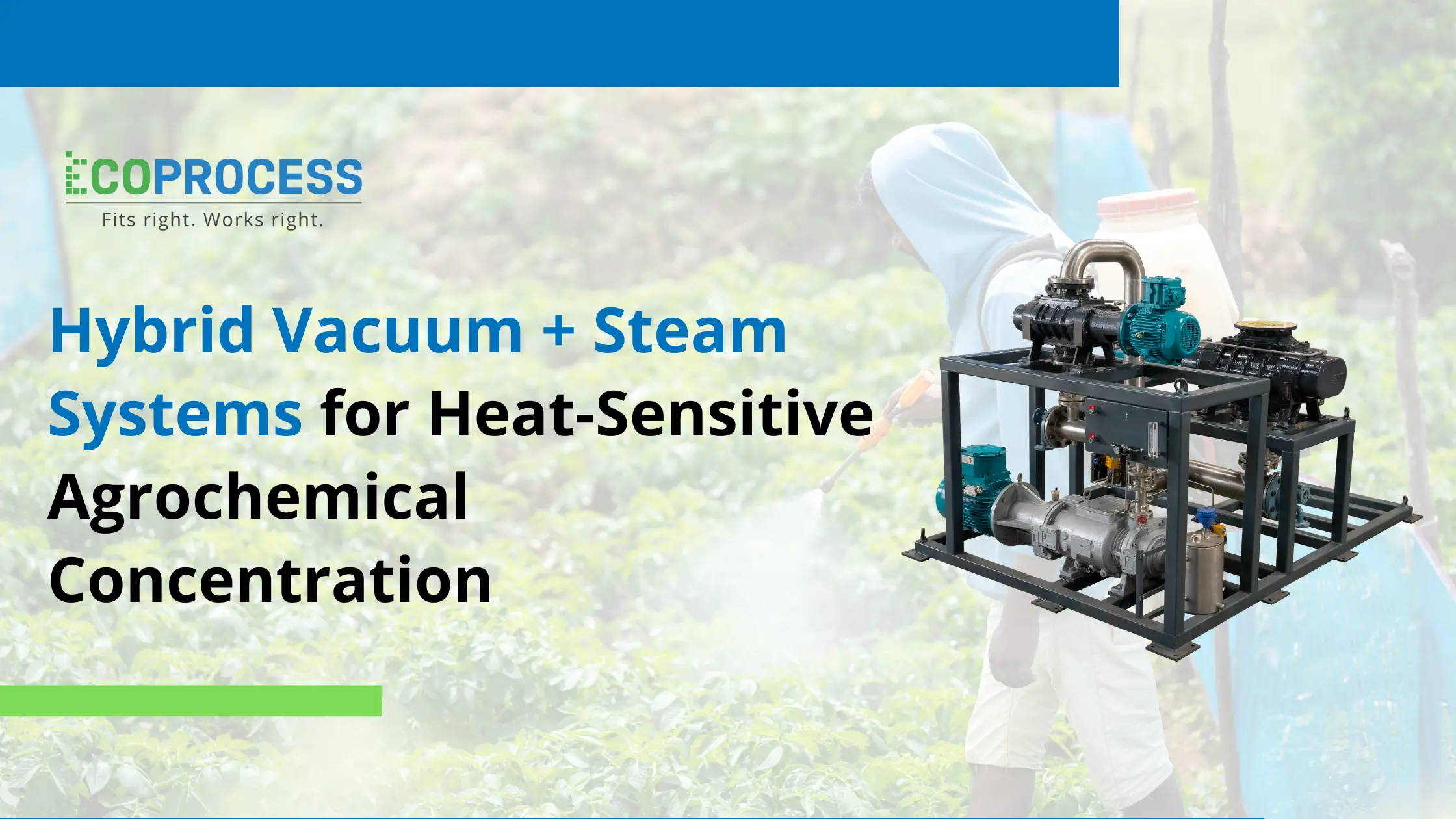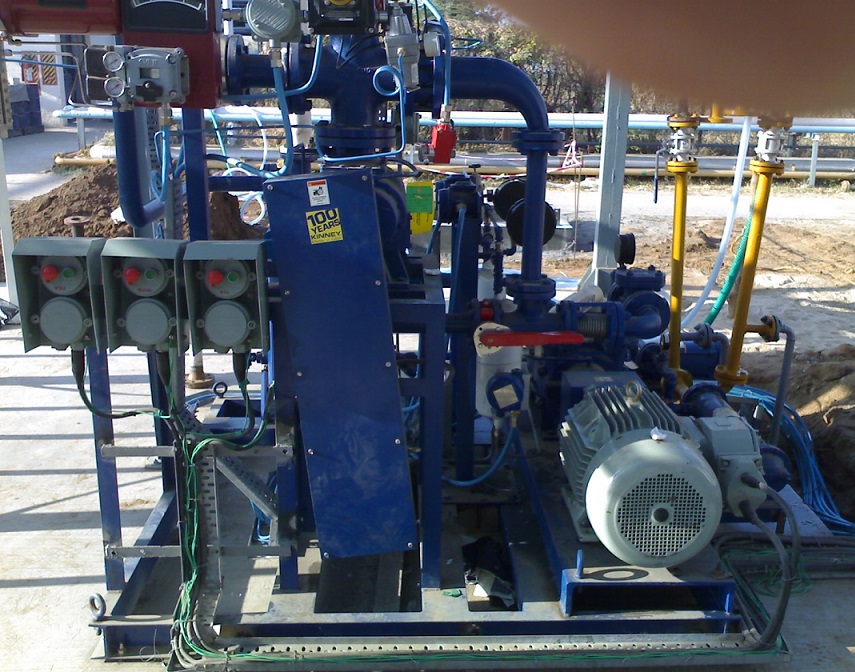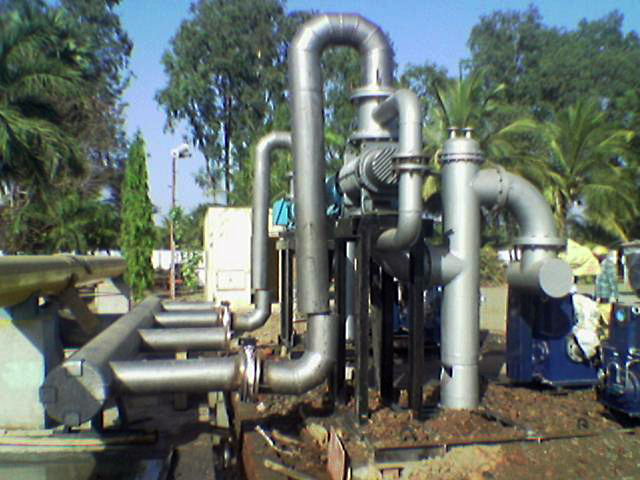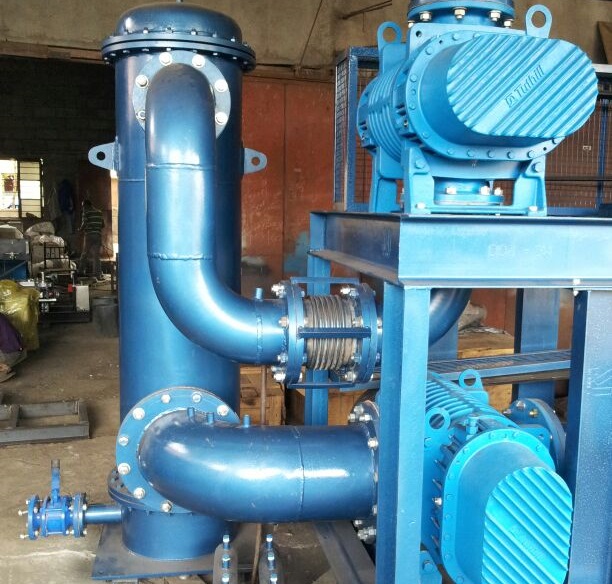
Real-World Metrics: How ATFD Systems Cut COD Loads in Chemical Plants
In chemical manufacturing, wastewater can be tricky; it's often packed with organics that push up the COD and BOD levels. Those numbers basically show how much oxygen the water would need to break everything down, so keeping them under control isn’t just about meeting regulations it’s about protecting the environment too.
The problem is, traditional treatment systems hit a wall when the effluent is loaded with dissolved solids or non-biodegradable compounds. That’s where Agitated Thin Film Dryers (ATFDs) step in. These systems are built for tough, high-viscosity liquids that most setups can’t handle. They don’t just cut COD levels, they also help recover valuable materials and make zero liquid discharge (ZLD) a real possibility.
Up next, let’s look at how ATFDs pull this off — and what the numbers from actual chemical plants tell us about their performance.
Effluent Challenges in Chemical Plants
In chemical manufacturing especially in areas like dyes, pharma, and agrochemicals wastewater tends to carry a lot of solvents, color, and organic residues. These compounds don’t just spike the COD and BOD; they also mess with biological treatment systems that come later in the process.
Some of the most common headaches include:
-
COD and BOD levels shoot way past discharge limits (often over 10,000 mg/L).
-
Tough, non-biodegradable organics that just don’t break down easily.
-
High TDS, which makes standard evaporation methods costly and power-hungry.
-
Foaming and scaling that drag down equipment performance.
To meet discharge limits like the CPCB’s 250 mg/L COD standard — plants need strong tertiary treatment systems that can handle heavy, changing loads. That’s exactly why Agitated Thin Film Dryers (ATFDs) are showing up more often in ZLD setups. They concentrate and solidify even stubborn residues efficiently, without burning through tons of energy.
How ATFD Works
An Agitated Thin Film Dryer (ATFD) works on a simple but powerful idea, fast surface evaporation. The feed liquid is spread into a very thin layer on a heated cylindrical wall, and rotating blades keep it constantly moving. This prevents buildup, keeps the surface clean, and helps heat transfer stay consistent throughout the process.
Here’s what happens step by step:
-
Feed Entry: Concentrated effluent, usually from a multi-effect evaporator (MEE) or an RO reject stream, flows into the dryer.
-
Film Formation: The rotating blades spread the liquid evenly along the heated surface, creating a thin, uniform film.
-
Evaporation: Under vacuum (or sometimes at atmospheric pressure), the film heats up and moisture or solvent flashes off almost instantly.
-
Vapor Recovery: The vapor is then condensed, and the recovered liquid, often clean water, can go right back into the process.
-
Solid Discharge: What’s left behind is a dry or semi-solid residue, which can be collected safely for disposal.
In the end, the ATFD slashes the liquid waste volume, makes disposal simpler, and often gives you reusable distillate water, turning a waste stream into something genuinely useful.
Why ATFD Reduces COD Effectively
-
Thermal Concentration of Organics:
ATFD systems do a great job separating what can evaporate from what can’t. Most of the high-COD organics stay back in the solid residue, while the vapors that get condensed carry very little COD making them much cleaner and easier to reuse. -
No Biological Dependence:
Because ATFDs rely purely on heat and physical separation, they don’t depend on bacteria or enzymes. That means even if the wastewater has toxic chemicals that would kill biological systems, the ATFD keeps working without a hitch. -
Controlled Residence Time:
The process happens fast, evaporation takes seconds, not minutes. This short contact time keeps the temperature under control and prevents unwanted side reactions or by-products from forming. -
Easy Integration with Other Systems:
In most Zero Liquid Discharge (ZLD) setups, the ATFD is the last step after MEEs or crystallizers. It handles whatever is left, drying out the concentrated slurry and making sure all dissolved and suspended organics are removed.
Real-World Data from Case Studies
Case 1: Dyestuff Manufacturing Plant – Gujarat, India
A large dye manufacturer in Gujarat was struggling with COD levels over 20,000 mg/L in its evaporator concentrate. After installing a 20 m² Agitated Thin Film Dryer (ATFD), the change was immediate. The COD in the distillate dropped from 20,000 mg/L to under 150 mg/L, and the solid waste about 5% of the total feed volume came out as a dry, disposable cake.
More than 90% of the recovered water was reused in scrubber and utility systems, and energy use dropped by 15–20% compared to their old forced-circulation evaporator. Overall, the plant not only met full ZLD compliance but also cut its disposal costs by 30%.
Case 2: Pharmaceutical Intermediate Unit – Hyderabad, India
In Hyderabad, a pharma plant producing solvent-heavy intermediates had waste streams that were tough to treat biologically. After adding an ATFD downstream of their MEE, they saw the feed COD of ~12,500 mg/L fall to under 200 mg/L in the distillate.
TDS in the condensate dropped from 80,000 ppm to about 300 ppm, and uptime improved to over 95% thanks to low scaling and easy cleaning. The unit also recovered solvent–water mixtures that were reusable, cutting freshwater use by 25%.
Case 3: Specialty Chemical Plant – Maharashtra, India
A chemical producer in Maharashtra, dealing with thick resin and polymer waste, installed an ATFD with steam-heated surfaces and scraper blades. The setup handled the viscous residues easily, eliminating the constant evaporator shutdowns that had been slowing production.
Results showed COD levels reduced from 18,000 mg/L to around 200 mg/L in the distillate, and about 90% of the residue was recovered as dry solids for safe landfill disposal. By integrating waste-heat recovery, the plant cut steam consumption by 10% saving roughly ₹25 lakhs in operational and disposal costs within the first year.
Compliance and Cost Benefits
Regulatory Compliance
ATFD systems make it much easier for chemical plants to stay within environmental limits set by agencies like the CPCB and SPCBs. When the condensate comes out with COD levels below 250 mg/L, it’s clean enough to be reused or safely discharged after a quick polishing step, a big win for both compliance and sustainability.
Resource Efficiency
By recovering most of the condensate and cutting down on the amount of solid residue, ATFDs take a lot of pressure off downstream treatment units. They also help reduce freshwater intake since much of the recovered water can go right back into the process.
Economic Advantages
-
Lower Disposal Costs: Dry solids are far easier and cheaper to handle compared to liquid waste.
-
Better Energy Use: When paired with MEEs or connected to waste-heat recovery systems, ATFDs make a noticeable dent in overall energy consumption.
-
Less Maintenance: The built-in scraper mechanism keeps scaling under control, so the equipment runs longer and needs less downtime.
Across several plants, payback times typically fall between 8 and 12 months, depending on capacity and how much solvent or condensate can be recovered.
Conclusion
In today’s chemical industry, cutting down COD and BOD isn’t just about ticking off compliance boxes, it’s about running smarter and more sustainably. Agitated Thin Film Dryers (ATFDs) have earned their place as one of the most dependable solutions for this job. They don’t just shrink the effluent load; they also help recover usable water and push plants closer to true Zero Liquid Discharge (ZLD).
With the ability to handle thick, viscous residues and still deliver over 95% COD reduction, ATFDs give manufacturers something rare, consistent results and cleaner operations. The condensate they produce can often be reused directly, cutting both waste and water bills.
For chemical producers looking ahead, investing in ATFD technology isn’t just a compliance decision, it’s a smart, future-focused move that turns waste into value while keeping the environment safe.
FAQS
1. What is COD and why does it matter?
COD, or Chemical Oxygen Demand, shows how much oxygen the water would need to break down all the organic matter in it. When COD is high, it usually means the wastewater is loaded with pollutants, bad news for aquatic life and a red flag for discharge compliance.
2. How does an ATFD help bring COD down?
An Agitated Thin Film Dryer works by evaporating water and separating out the heavy organic compounds. All the high-COD material stays behind as a dry residue, while the condensed vapor, the distillate, comes out much cleaner and easy to reuse.
3. What are the compliance benefits?
Plants using ATFDs can easily stay below the CPCB limit of 250 mg/L COD, which is the benchmark for clean discharge. Many facilities also use ATFDs as part of Zero Liquid Discharge (ZLD) systems, helping them hit the toughest environmental targets.
4. What kind of cost savings can you expect?
You’re looking at 20–30% lower energy use, smaller waste disposal bills, and often some solvent recovery that can be fed back into the process. Most plants see a pretty quick return on investment once it’s up and running.
5. Are results consistent across industries?
Yes — and that’s one of the biggest selling points. Whether it’s dyes, pharma, agrochemicals, or specialty chemicals, ATFDs have shown reliable performance even with very different effluent compositions.
























